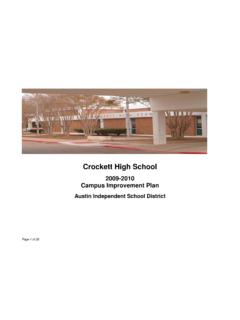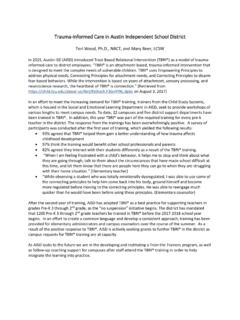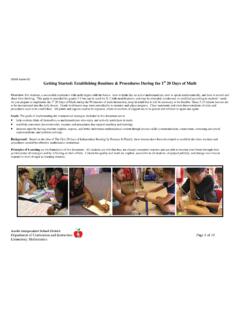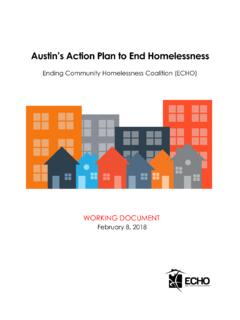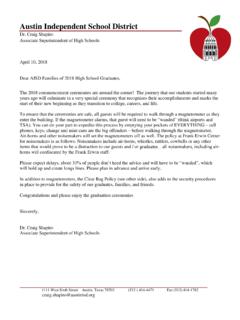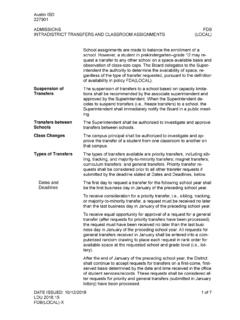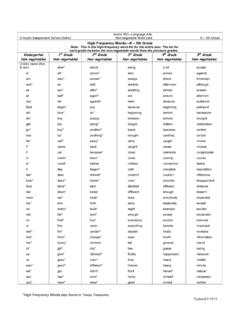Transcription of Public Schools Resource Guide - Austin Public Library
1 Public Schools Resource Guide Sources of Information Relating to Austin and Travis County Public Schools Austin History Center Austin Public Library Compiled by Bob Rescorla and Molly Hults 2013 Updated 2014 May Updated 2014 August Updated 2015 January Updated 2015 May Updated 2015 August Updated 2015 December Updated 2016 September Updated 2017 September Updated 2018 February Updated 2019 March Updated December 31, 2019 Austin History Center Public Schools Resource Guide 2 INTRODUCTION The collections of the Austin History Center contain valuable research materials that document the establishment and development of the Austin independent school district , Austin Public Schools , and Travis County Rural Schools .
2 The materials in this Resource Guide are arranged by collection unit. Within each collection unit, items are arranged in shelf-list order. The purpose of the Austin History Center is to provide customers with information about the history and current events of Austin and Travis County by collecting, organizing, and preserving research materials and assisting in their use. Austin History Center Public Schools Resource Guide 3 Table of Contents INTRODUCTION .. 2 BRIEF OVERVIEW OF THE EARLY YEARS OF Public Schools IN Austin AND TRAVIS COUNTY .. 4 ARCHITECTURAL ARCHIVES COLLECTION .. 11 Architectural Archives Collections with school drawings .. 11 Individual drawings not part of a collection .. 16 ARCHIVES & MANUSCRIPTS COLLECTION.
3 17 Official school 17 school Related Collections .. 19 OVERSIZE ARCHIVES .. 29 Austin FILES SUBJECT, TEXT, AND PHOTOGRAPHS .. 31 Austin FILES BIOGRAPHY, TEXT, AND PHOTOGRAPHS .. 42 Austin FILES HOUSE/BUILDING, TEXT, AND PHOTOGRAPHS .. 49 GENERAL COLLECTION .. 50 Monographs and city and county reports .. 50 57 MAP COLLECTION .. 58 PERIODICALS .. 60 RECORDING COLLECTION AUDIO .. 66 RECORDING COLLECTION 80 ADDITIONAL RESOURCES .. 82 school Board Minutes .. 82 Materials at the AISD Media Library Center .. 83 Austin History Center Public Schools Resource Guide 4 BRIEF OVERVIEW OF THE EARLY YEARS OF Public Schools IN Austin AND TRAVIS COUNTY In the mid-1800s, the citizens of Austin had conflicting views on whose responsibility it was to pay to educate children, who should decide whether a child should be educated, and what children should be taught.
4 European immigrants, such as the Germans, and those from the North believed in Public education systems supported and run by the state or local government. New citizens from other southern states felt that it was the right and responsibility of the parent to decide if and how their children should be educated. Nobody wanted to pay extra taxes for education. Before formal establishment of Public Schools in Austin , education was provided by an assortment of small, private, tuition-charging academies. The Common school Law of 1854 signed by Governor Pease called for the organization of common Schools , provided a system for payment of tuition for indigent and orphaned children, set up rules that allowed private Schools to convert to common Schools , and provided money to be apportioned to counties based on an annual scholastic census.
5 Each district was responsible for building a school building, but no money was provided to finance this endeavor. This bill appeased most people because the money came from a state funded account (not taxes) and communities controlled how, what, and who was being taught. In Austin , it does not appear that any of the private Schools converted to a common school to take advantage of the apportioned monies. Nor were any new school buildings built, but this is not surprising given the apportionment was only $ per student. The law was amended in 1856 to eliminate some of the bureaucracy and allowed any school (even private Schools ) and teachers that met certain requirements to be entitled to receive state funds. The private Schools came and went, with most of them closing during the Civil War years.
6 No state funds were distributed to the counties after 1861. After the war, private institutions were reestablished. The Constitution of 1869, written by the Republicans that came into power during the Reconstruction period, made free Public education a priority. The school Law of 1871 was passed, which was one of the most highly centralized systems of compulsory education in the United States. The State Board of Education was given the power to make rules and regulations for the establishment of Schools , examine and appoint teachers, fix salaries, define the course of study, and select textbooks. The new law also included additional taxation, which previous leaders had promised would never happen. Jacob DeGress, a Northern soldier who had no education experience, was appointed superintendent of Public instruction by Governor Edmund Davis.
7 This unpopular law also violated what was considered to be the parent s natural right to decide if a child should be sent to school and what they should learn. Despite the outrage of many of its citizens, the State persevered and opened the first free Public Schools in Austin , and Texas, on September 4, 1871. The Southern Democrats came back into power in 1873 and repealed the majority of the improvements that had been made to the educational system in Texas since Governor Pease had passed the Common school Law of 1854. Local districts resumed control of the Schools and the Austin History Center Public Schools Resource Guide 5 Superintendent of Public Instruction became an advisory position. The new law was confusing and the amount of money insufficient.
8 According to a report submitted by the County Superintendent of Public Schools of Travis County on August 12, 1875, no Public Schools had yet been established in Austin , although school buildings were being built in the rest of Travis County. African American communities created community Schools to replace the Public Schools closed by the new government. The 1877 City Directory states that there were 3 Schools for African American students. Travis County Court Record C indicates that at least some African American teachers were receiving state funds in 1876, and presumably they were teachers at these 3 Schools . Additional state funds were used to build two buildings, one in Wheatville and one east of the city, that were ready to open in 1877.
9 By 1879-1880 the number of Schools for African American students had increased to 5. The apportionment for Austin from the state school fund and the revenue raised through taxes was not enough money to build a school in the years directly following the Democrats revision of Texas school law. Local officials allowed the money to accumulate with the county treasurer, and in 1875 announced that a school would be erected at the site designated for a University. In 1876, just as Austin completed building its first school building with Public funds, the Texas Legislature passed a law allowing cities to establish their own Public Schools . But in Austin , there was opposition to taking the management of Schools out of the hands of the parents and the community system.
10 In the mid-1870s, the Austin Graded school Community was organized by parents, and the board of directors worked to break down the prejudice against Public or graded Schools . The new Austin school building was used for a community school that was free, as long as there was state money to pay the teachers; generally, parents had to pay tuition for the second half of the year. In 1879, the state school law was amended to allow the Schools to be placed under the control of a board of six trustees elected by qualified voters rather than city council. This distinction seems to have been the tipping point that allowed school advocates and community leaders such as A. P. Wooldridge, J. W. Graham, J. B. Rector, John T. Allan, Swante Palm and Z.
